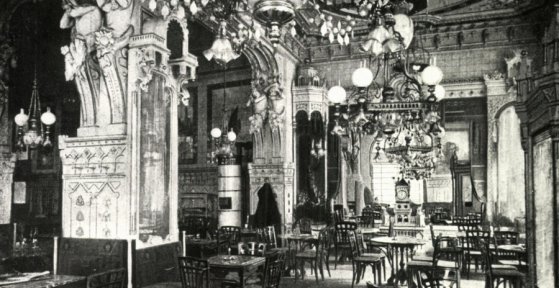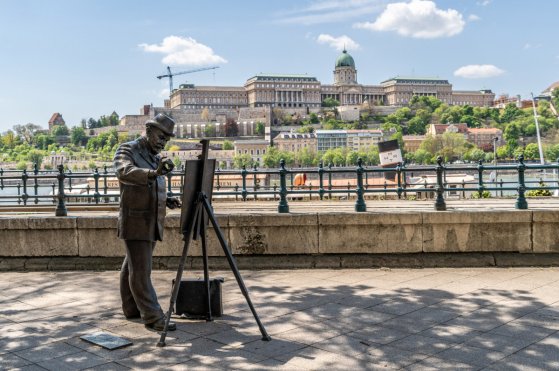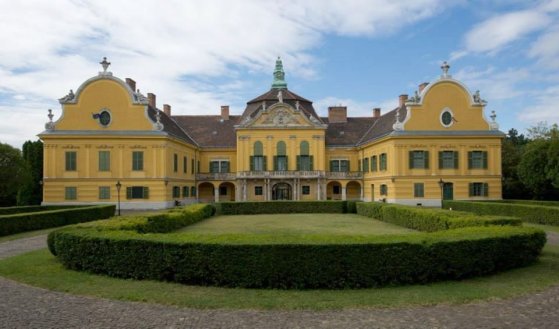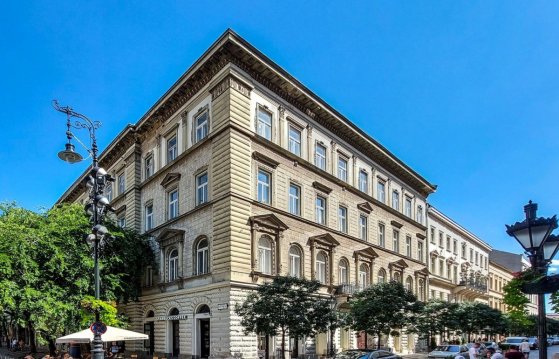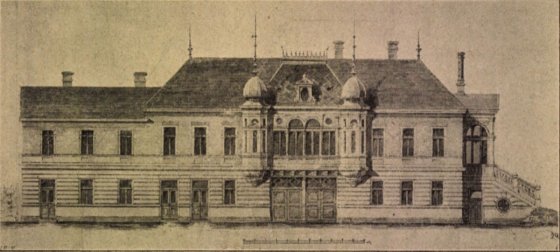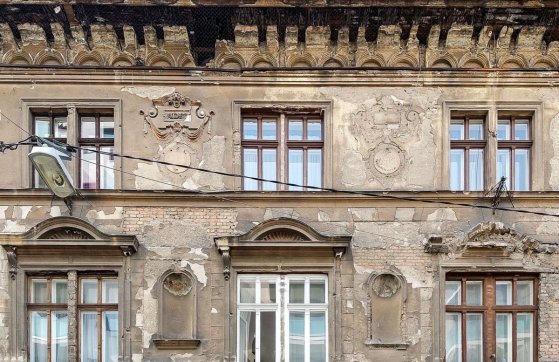 The „intertwined history” of the bridges and the city of Budapest
Which ideas and events have shaped the fate of bridges of Budapest and the cityscape? Alongside many other interesting facts, this question is also answered this newly published book by the Budapest City Archives, which introduces the history of bridges in Budapest.
The „intertwined history” of the bridges and the city of Budapest
Which ideas and events have shaped the fate of bridges of Budapest and the cityscape? Alongside many other interesting facts, this question is also answered this newly published book by the Budapest City Archives, which introduces the history of bridges in Budapest.
László Bálint Nagy
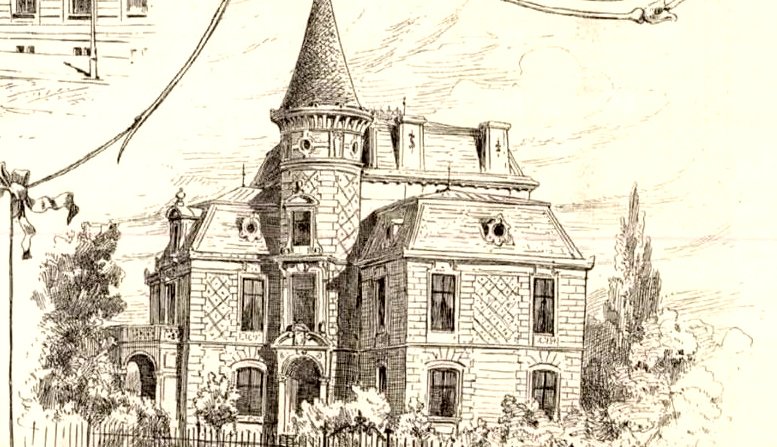 Medieval castles inspired the former Fackh Villa on Andrássy Avenue
Medieval castles inspired the former Fackh Villa on Andrássy Avenue
May 18, 2022 at 4:00 PM
It was damaged in World War II, so one of the charming villas on Andrássy Avenue was demolished, which was built as the family house of the director of the Western Railway company in the early 1880s. The building was bought by the Hungarian state at the beginning of the 20th century, which later handed it over to a female monastic order, so it is not surprising that a chapel was built there at that time. After the war, the decision-makers did not spare the villa, building a modern residential house in its place.
At the turn of the century, Balaton Café was the center of social life, today it is for university students
November 18, 2021 at 11:30 AM
One of the exclusive cafés at the turn of the century was the Balaton Café [Kávéház in Hungarian], opened in 1894 on the corner of Rákóczi Road and Szentkirályi Street. The owner set himself no less a goal than to compete with the New York Café that opened at the same time. The café became the haunt of well-known politicians, famous actors, renowned writers, but its lavish interiors can unfortunately only be known from photographs today. Recently, university students took possession of the Szentkirályi Street wing, but there is nothing reminiscent of the luxurious past in the newly established examination center.
In the footsteps of our famous painters - Artist sculptures in Budapest
October 16, 2021 at 2:00 PM
On the occasion of the Hungarian Artists Day on 18 October, we followed in the footsteps of Budapest's artist sculptures: we show how the famous artists live in the memory of the capital, which painters' memories were preserved, why and how.
András Mayerhoffer, the creator of the Hungarian Baroque style, died 250 years ago
September 12, 2021 at 9:30 AM
András Mayerhoffer, born in Salzburg, is one of the leading figures of Baroque-Rococo architecture in Hungary. He is also known as the creator of the so-called Grassalkovich or Gödöllő style. The works of the master builder and architect, who died 250 years ago, such as the first two-towered Catholic Church in Pest or the former Péterffy Palace in Piarista Street - are still defining elements of Budapest's cityscape.
Where Mór Jókai and Johann Strauss Jr. met - A fire destroyed the German Theatre in Lipótváros
August 27, 2021 at 12:30 PM
At 24 Báthory Street, 5th District, it can be found out only from a memorial plaque that the German Theatre of Pest once stood here. This was already the third venue for German acting in Pest, but the theatre could not function here for a long time either. Twenty years after its opening, on 20 December 1889, a fire destroyed the building, in which Mór Jókai also turned, and an operetta written from his work was even performed here.
Miklós Borsos, who made the Zero Kilometre Stone, was born 115 years ago
August 13, 2021 at 9:00 AM
Miklós Borsos, who was recognised as a sculptor, medalist and graphic artist, was born on 13 August 1906, in Nagyszeben (today's Sibiu, Romania), Transylvania, 115 years ago. He lived in Győr, and then in Budapest from 1945. In winter, he worked in the Castle District, at 6 Úri Street, and in summer, in Tihany; his permanent museum can be visited in Győr. Several of his works can be seen in Budapest, and a few of his works involuntarily attracts attention.
The Neo-Renaissance facade hides a classicist interior in Hercegprímás Street, Lipótváros
July 31, 2021 at 10:00 AM
The house, built in 1844 in the classicist style by Hild József, remodelled in the neo-Renaissance style at the beginning of the 20th century, is now one of the most beautiful buildings in the square surrounding St. Stephen's Basilica at 7 Hercegprímás Street. The facade itself is special with the decorations alternating from floor to floor, and the cosy inner courtyard has retained its classicist touches. What overshadows the history of the palace is the history of the former owners.
Ferenc Novák designed first an electric cogwheel railway and then a hydraulic funicular on Gellért Hill
July 29, 2021 at 2:00 PM
In the last decade of the 19th century, architect Ferenc Novák presented to the public the plan of the Gellért Hill funicular, which was connected with the intention to demolish the Citadel. According to Novák's idea, not only a funicular would have been built on Gellért Hill, but also a lookout, an illuminated statue and the National Pantheon as a millennium monument. The architect would have built first an electric cogwheel railway and then a hydraulic funicular, for which he also received permits. Yet his dream did not come true.
Several people have already planned a funicular to Gellért Hill, but neither the cogwheel nor the steam cable car has been built
July 26, 2021 at 2:00 PM
What could be the explanation for the fact that despite the approved plans since the second half of the 19th century, the construction of a Gellért Hill funicular has never started? Guido Fuchs already in 1884, then in the 1890s Mór Balázs, Vince Ede Miller and Ferenc Novák put their own ideas on the table. However, none of them came close to implementation.
A statue of Mozart and Dvořák once adorned the facade of Ellinger Palace
July 18, 2021 at 10:00 AM
At first glance, people can only see one dilapidated house in Terézváros, at 2/B Németh László Street. However, behind the dropping plaster of the once ornate Ellinger Palace, special stories emerge. Half of the house was owned by the violinist and internationally renowned music teacher, Gusztáv Ellinger, while the other half was the architect Ferenc Novák's, who became known in the 1890s for his plans for the Gellért Hill Funicular.
More articles
 The „intertwined history” of the bridges and the city of Budapest
Which ideas and events have shaped the fate of bridges of Budapest and the cityscape? Alongside many other interesting facts, this question is also answered this newly published book by the Budapest City Archives, which introduces the history of bridges in Budapest.
The „intertwined history” of the bridges and the city of Budapest
Which ideas and events have shaped the fate of bridges of Budapest and the cityscape? Alongside many other interesting facts, this question is also answered this newly published book by the Budapest City Archives, which introduces the history of bridges in Budapest.
 The Bridge Report, which brought a turning point in the history of Budapest
A travel report that changed the history of Pest and Buda, as well as Hungary. The little book contributed to the change of half a thousand years of legal customs and the implementation of an investment of unprecedented size and technical quality. This book was The Bridge Report [Hídjelentés in Hungarian].
The Bridge Report, which brought a turning point in the history of Budapest
A travel report that changed the history of Pest and Buda, as well as Hungary. The little book contributed to the change of half a thousand years of legal customs and the implementation of an investment of unprecedented size and technical quality. This book was The Bridge Report [Hídjelentés in Hungarian].
 Drama on the university wall - The heroic monument was planned 95 years ago
In the constant hustle and bustle of the Egyetem Square in Pest, the students may not even notice the monument that decorates the short section of wall between the church and the central building of ELTE. However, it commemorates their predecessors, the heroes who fought for their country in World War I, and those who heroically helped them. The first design of the dramatically collapsing soldier was born in 1928, ninety-five years ago.
Drama on the university wall - The heroic monument was planned 95 years ago
In the constant hustle and bustle of the Egyetem Square in Pest, the students may not even notice the monument that decorates the short section of wall between the church and the central building of ELTE. However, it commemorates their predecessors, the heroes who fought for their country in World War I, and those who heroically helped them. The first design of the dramatically collapsing soldier was born in 1928, ninety-five years ago.

